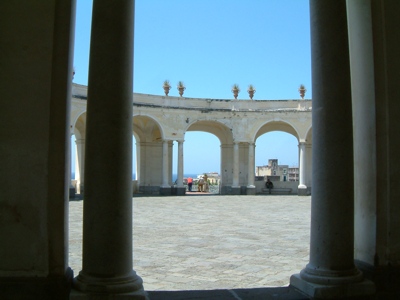| Herculaneum excavations |
 | |
Herculaneum was destroyed in the 79 A.C. Vesuvius eruption. The town was covered up with volcanic tuff, ashes and mud that, once dried, have helped keeping many perishable objects as wood, papyri and foods well preserved, letting the scientist know many thing about the real roman everyday life. The first official excavations were promoted by Borbone in 1738. The archeologists concocted a subterranean tunnels system. Various villas, marbles and works of art were found: as the famous Theatre and the astonishing Villa of Papyri, whose frescos are one of the most remarkable of the roman civilization. Today the greater part of the ancient town is still buried, lying under the modern Ercolano.
|
|
| Campolieto's Villa |
 | |
The villa, restored by Ville Vesuviane Society and inaugurated in 1984, is part of the so called "Miglio d'oro", bordering "Villa Favorita". It was built between 1755 and 1755 by Mario Gioffredo on behalf of the owner Duke Luigi di Sangro Casacalenda. Luigi Vanvitelli directed the works, lately ended by his son Carlo. The building features a marvelous elliptical porch and it is famous for a huge dome covering entirely the stairs hall. The villa is setting for important cultural and artistic events. Among the most well-known we can quote "The Vesuvian Villae Festival".
|
|
| Villa Favorita Park |
 | |
The beautiful Villa Favorita Park lies close to the sea, and is part of the so called "Miglio d'Oro" (Gold Mile), a beautiful promenade flanked by many old remarkable county villas. It is crossed by a long alley which divides the park in two side wings; Villa Favorita was the pleasure garden for the recreation of the Borbone aristocracy. In the Villa Park are frequently held shows and cultural events.
|
|
|
 Photo gallery of Ercolano: Campania Region - Italy. Images about: Herculaneum excavations, Campolieto's Villa, Villa Favorita Park
Photo gallery of Ercolano: Campania Region - Italy. Images about: Herculaneum excavations, Campolieto's Villa, Villa Favorita Park
